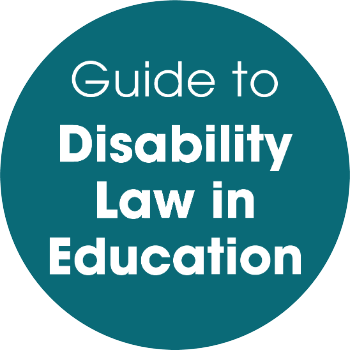02.01 Does the Equality Act 2010 afford a disabled child or young person any protection in education?
A: SenseCheck

- 1 Yes
- 0 No
- 0 Other
- 10 Nov 2022
-
Yes
|
Complex
Yes. Sch. 2 of the EqA2010 places obligations on schools and post 16 provisions in relation to disabled pupils and students. This includes taking positive action by making reasonable adjustments. This means modifying procedures or process or providing axillary aids to a disabled pupil or student to avoid them being disadvantaged as result of their impairments when compared to those who are not disabled: s20 EqA2010. A failure to make reasonable adjustments is disability discrimination.
The following conduct is also prohibited and can also be standalone claims of disability discrimination:
Direct discrimination – this means treating a disabled child or young person less favourably than a child or young person would be in the same circumstances simply because they have the protected characteristic of disability - s13 EqA2010
The disabled child or young person can only be treated unfavourably as a consequence of something arising from their disability if the treatment is an objective proportionate means of achieving a legitimate aim, s15 EqA2010. In practice when determining whether the unfavourable treatment can be justified will mean first making all relevant reasonable adjustments and considering all alternatives which involve less unfavourable treatment.
Indirect discrimination - this may occur when, for example, a school applies an apparently neutral provision, criterion or practice which puts pupils sharing the protected characteristic of disability at a particular disadvantage and this cannot be justified as being a proportionate means of a legitimate aim. The phrase ‘provision, criterion or practice’ (or PCP as it is often referred to) is not defined by in EqA2010 but it should be construed widely so as to include, for example, any formal or informal policies, rules, practices, arrangements, criteria, conditions, prerequisites, qualifications or provisions. A provision, criterion or practice may also include decisions to do something in the future such as a policy or criterion that has not yet been applied, as well as a ‘one-off’ or discretionary decision.
Harassment, s.26(1)(a) and (b) EqA2010. This is a dignity-based concept and occurs when a school or post-16 provision engages in unwanted conduct which is related to the protected characteristic of disability, and which has the purpose or the effect of:
- violating the pupil or student’s dignity or
- creating an intimidating, hostile, degrading, humiliating or offensive environment for the pupil or student
Victimisation. This occurs when a pupil or young person is subject to a detriment because they (or their parent or sibling - s86(2) EqA2010) has done a 'protected act’ or because the school or post-16 provision believes that they l have done or may do so in the future s27(1) EqA2010. A protected act in this case means seeking redress as allowed by EqA2010.
Glossary: EqA2010
Example: The following are examples of reasonable adjustments:
- A visually impaired pupil is provided with a number of ways to take notes in lessons i.e. an MP3 player or a recording device, or voice to text software - these would be auxiliary aids.
- A disabled pupil who is wheelchair bound, is provided with an assistant to help them get around the school or post-16 provision. This would be an auxiliary service.
- A school decides to go to a particular venue on a school trip because it has good facilities for hearing impaired children, and this is to accommodate a particular child. This would be a reasonable adjustment.
- A selective school includes exams as part of its entrance procedures, in the case of a disabled child who may be disadvantaged, they consider what adjustments can reasonably be made to the exam procedure to avoid any disadvantage the child may experience.
- A school has a policy that children are seated alphabetically in a classroom, the policy is modified so that a child with a visual impairment can sit at the front of the class. This avoids the disadvantage they would experience if they had to sit further away.
For detailed advice on SEN law: search Q&A for Noddy No-nonsense Guide to SEN law

|
Comment